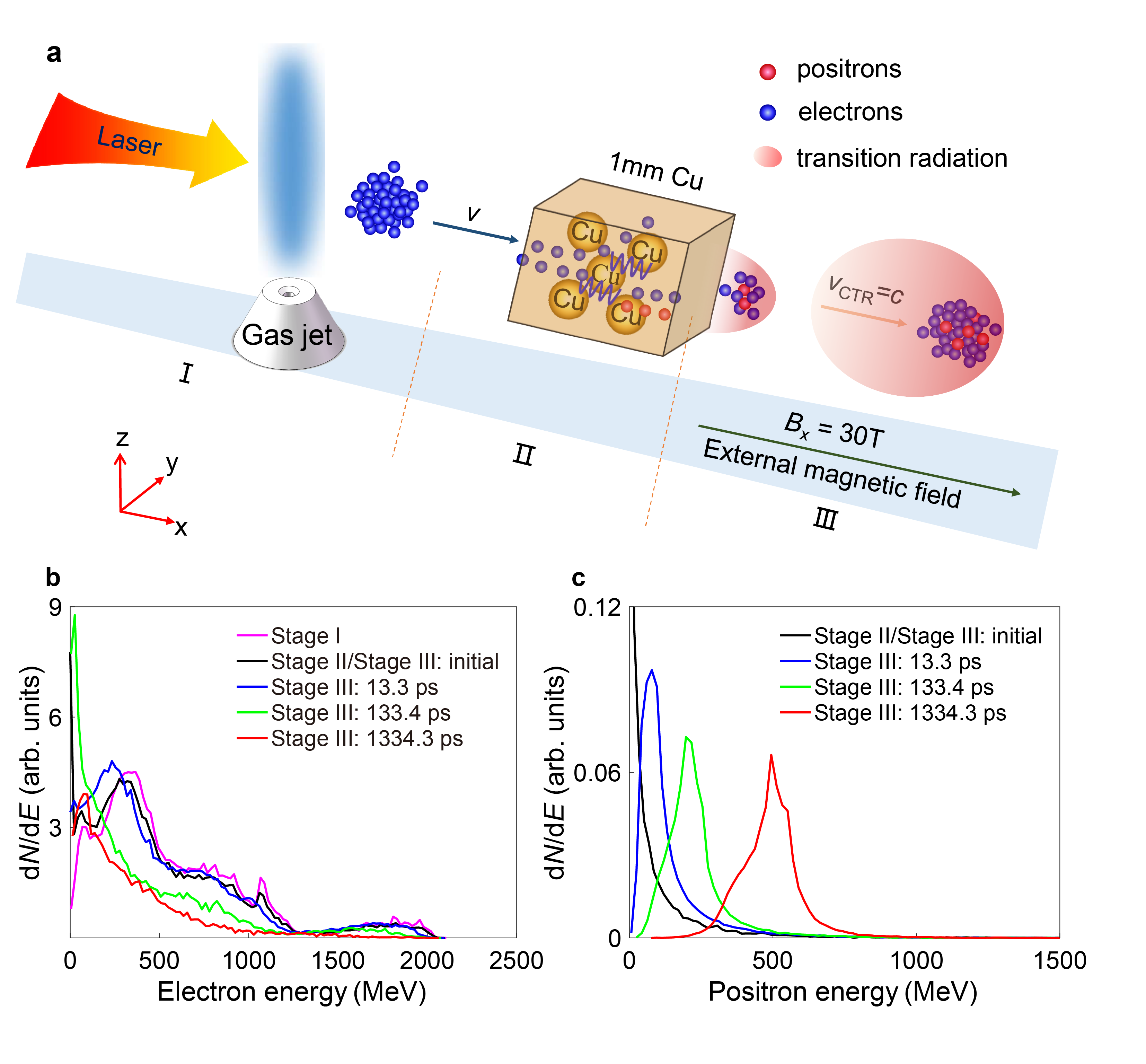Since the concept of laser wakefield acceleration (LWFA) being first proposed, electron acceleration driven by femtosecond relativistic laser pulse has made remarkable progress. Electron energy has reached 7.8 GeV with a small energy spread.
However, the acceleration of pre-generated positrons is not as straightforward as it is for electrons. A key issue is that the plasma wakefield valid for electron acceleration defocuses positively charged particles.
Recently, Shanghai Institute of Optics and Fine Mechanics (SIOM), Chinese Academy of Sciences (CAS) has made progress in positron acceleration. The research group proposed for the first time using the coherent transition radiation (CTR) to accelerate positrons and obtained a quasi-monoenergetic positron beam. The related results have been published in Communications Physics.
The group proposed a scheme that utilizes laser-driven electrons to produce, inject and accelerate positrons in a single set-up. The scheme is composed of three stages: stage I is the generation and acceleration of high-charge high-energy electrons in LWFA; stage II is the positron generation in the copper target via the routine Bethe-Heitler process and stage III is the acceleration process for positrons. In stage III, when the dense electron bunch from LWFA emits from the copper target into a vacuum, the induced strong CTR is capable of trapping and accelerating positrons for a long distance.
Simulation results show that the CTR field is up to 10’s GV m-1, which captures and accelerates the positrons to cut-off energy of 1.5 GeV with an energy peak of 500 MeV (energy spread ~24.3%). An external longitudinal magnetic field of 30 T is also applied to guide the electrons and positrons during the acceleration process. This proposed method offers a promising way to obtain GeV fast positron sources.
This work was supported by Ministry of Science and Technology of the People’s Republic of China, Strategic Priority Research Program of the Chinese Academy of Sciences, the Scientific Equipment Research Project of Chinese Academy of Sciences and the National Natural Science Foundation of China.

Fig. 1 a Sketch of the proposed setup. b Electron energy spectra. c The energy spectra of positrons. (Image by SIOM)
Article website:
https://www.nature.com/articles/s42005-020-00471-6
Contact:
Mr. Wu Xiufeng
General Administrative Office
Shanghai Institute of Optics and Fine Mechanics, CAS
Email: xfwu@siom.ac.cn